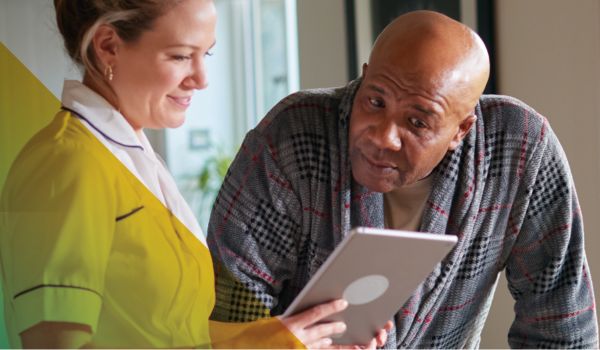Thirdly, we reflected on the de-investment over the last 10-15 years in supported housing and the subsequent impact this has had on the NHS.
It’s hard to comprehend just how much support has been removed from our more vulnerable communities, but what is clear is the negative impact this has had on people’s lives and the resulting costs to the public purse. One key impact is the number of people at the door of emergency services and healthcare, and the resulting demand on the NHS. If housing and health can work alongside one another, and reinvest in support and other preventative services, we can build communities that are resilient, supportive, healthier, and happier.
Another key takeaway was a discussion around the role of place-based collaboration with communities.
We heard from the “Changing Futures Programme” in Northumbria, who take a novel approach to addressing multiple disadvantages such as drug and alcohol addiction, domestic violence, homelessness, and disabilities. Their way of working – the liberated method– is a fundamentally different way of engaging with people. It isn’t about hitting numbers, targets, or KPIs. It’s about working alongside individuals on what truly matters to them. Instead of referring people for help, they pull resources towards people to provide comprehensive support. This approach struck a chord with me because it aligns with the work we do at HACT—using long-term thinking and collaboration to meet community need over ticking boxes.
During the session, a case study was presented showing that the costs associated with supporting one particular individual were nearly £1million. Put into perspective, the presenters said that this the same as employing a Band 7 nurse for 14 years. This got me thinking and in housing terms in Northumberland, they could have bought a house, furnished it, and provided one-to-one support for over ten years. This case study highlighted that the inefficiencies in our system are detrimental not only to the individuals involved, but the services themselves. If our focus is too narrow, we end up pushing people through services that don’t engage or deliver the desired outcomes.
If we take a step back and embrace collaboration, we can provide significantly better outcomes. By pooling our resources and working together, we can create more effective and human solutions that not only save money, but also transform lives.
Investment in primary care was also a key theme.
I listened to a speech delivered by the CEO of NHS England, Amanda Pritchard. She talked about the sense of urgency around pushing resources into primary care to ensure we have a well-sourced environment to help limit the demand for acute services. This is right and important, but also a difficult thing to do.
Only 20% of our health outcomes are as a result of clinical intervention, and the remaining 80% from things such as good housing, good jobs, our local environment, and good social networks. We need to join these up.
Amanda went on to outline the need for investment in leadership, in particular, the leadership around collaboration and integration. The focus needs to shift from leading in a clinical area to leading within a system.
When the NHS is presented with a problem, its first response tends to be how do I solve this, when it should be who can help me solve this. This approach can lead us to the door of individuals with skills and expertise, which is how networks and collaborations are formed.
Elsewhere at the conference, I was struck by the positive change brought about by investment in innovation.
There’s huge innovation in the NHS space, but it’s mostly clinical. What I wanted to ask is where does the NHS see itself in terms of innovation at place, particularly with partners like housing and beyond? Patient support is vital, but we need to tackle bigger picture, longer-term problems, like supporting communities to be healthy.
Overall, I came away with the feeling that the potential we have for transformative impact in both health and housing is immense. The discussions and innovations highlighted reinforce the need for integrated approaches to health and housing, and by working together, we can create communities that are resilient, supportive, healthier, and ultimately happier.
I am excited about the future we are building together and confident that through collaboration, we will achieve remarkable outcomes for our communities.




